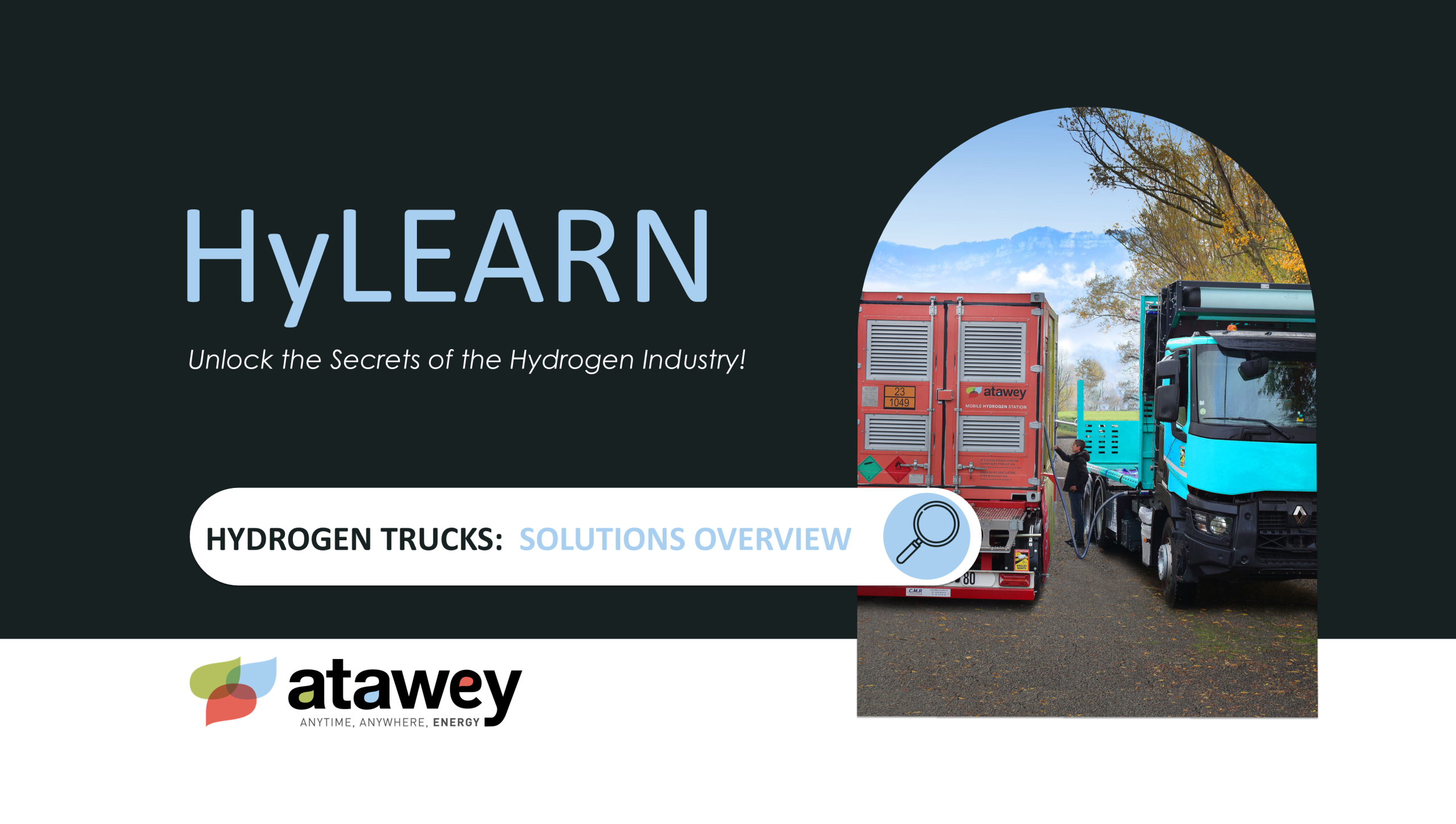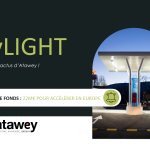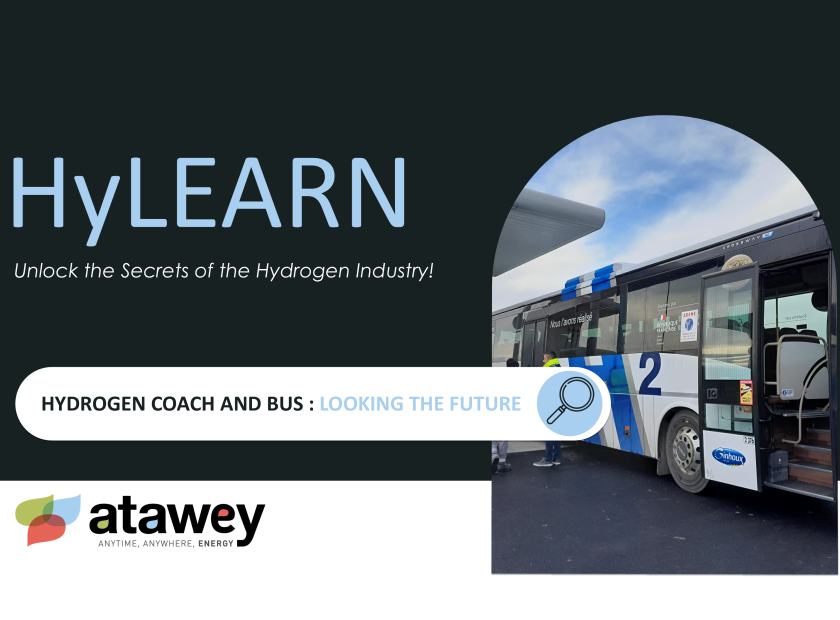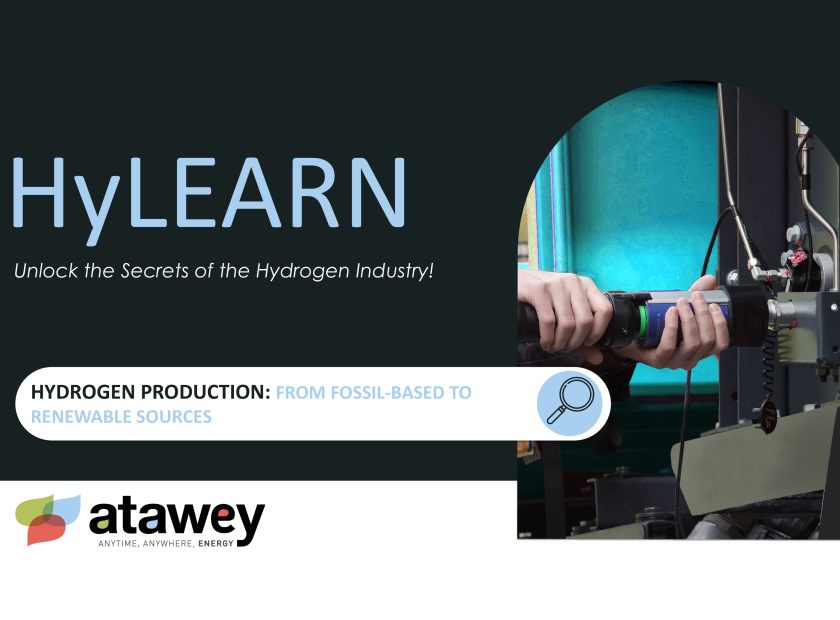
Hydrogen Trucks: A Revolution for Road Freight
As climate change accelerates and freight transport must decarbonize, hydrogen is emerging as a credible alternative to diesel. Especially for heavy-duty vehicles, it combines range, performance, and sustainability. Let’s explore how hydrogen-powered trucks — whether fuel cell or hydrogen combustion engine — are redefining the future of road transport.
The Stakes of Road Freight in the Energy Transition
In Europe, road freight accounts for around 25% of transport-related greenhouse gas (GHG) emissions. This figure hides national disparities, as the weight of freight transport depends on logistics and energy contexts:
-
France: 29% of land transport emissions come from freight,
-
Spain: 31%,
-
Belgium: 21%,
-
Germany: 20%,
-
Italy: 25%.
To tackle this, the European Union has set ambitious climate targets through the Fit for 55 package, requiring a 55% cut in GHG emissions by 2030 and full carbon neutrality by 2050. This calls for a structural overhaul of transport, particularly road freight, whose emissions remain stagnant — or rising — in many member states.
Alongside this EU framework, several countries have launched national programs to accelerate the transition:
-
France: the 2019 Mobility Orientation Law (LOM), reinforced by the 2021 Climate & Resilience Law, mandates the progressive decarbonization of public fleets.
-
Germany: the KsNI program provides large-scale funding for zero-emission trucks (battery-electric and hydrogen) and their refueling infrastructure.
-
Italy: the PNRR recovery plan allocates over €25 billion to sustainable mobility, with a dedicated focus on low-carbon logistics.
-
Spain: the Climate Change and Energy Transition Law sets targets for fleet renewal and alternative drivetrains in freight and urban transport.
For logistics operators and road freight carriers, this regulatory momentum means they must start preparing now. The ambition requires:
-
Actively exploring zero-emission alternatives,
-
Aligning technology choices with EU standards (AFIR, Euro VII, ZEV mandates),
-
Moving quickly, as the deployment window narrows toward 2030.
For long-haul trucking, constraints are particularly acute:
-
Extended driving ranges,
-
Fast refueling needs,
-
High payload capacity.
Here, battery-electric trucks reach their limits. Hydrogen emerges as a strategic solution.
Battery-Electric or Hydrogen Trucks?
The energy transition in freight is not about a single technology. Battery and hydrogen are complementary:
-
Battery-electric trucks are ideal for short-haul, urban, and regional routes.
-
Hydrogen takes over when autonomy, flexibility, or grid limitations become critical.
Fact 1: Long-Distance Battery Trucks Hit a Logistical Wall
Charging just ten trucks simultaneously at a rest stop can require 10 MW of instantaneous power — the equivalent consumption of a small town. This would take decades of grid upgrades and permits, while the climate clock keeps ticking.
Fact 2: Efficiency Is Context-Dependent
Comparing battery vs hydrogen efficiency without context is misleading. The well-to-wheel approach shows that producing hydrogen in high solar irradiation regions (e.g., North Africa, Middle East) offsets electrolysis losses thanks to superior solar density.
Fact 3: Hydrogen Unlocks Wasted Renewable Energy
In 2024, Germany curtailed more than 10 TWh of renewable power due to lack of storage — a loss worth nearly €3 billion. Hydrogen enables these surpluses to be converted into a usable energy carrier for transport, industry, and the grid.
Fact 4: H₂ Infrastructure Scales Faster Than Heavy-Duty Charging Hubs
Hydrogen refueling stations are easier to implement than high-capacity charging hubs, require less space, and can refuel multiple trucks in parallel within 10–15 minutes, just like diesel.
Deploying both infrastructures (HPC charging + hydrogen) is faster, more flexible, and more cost-effective at a European scale — exactly what the AFIR regulation aims for.
Three Hydrogen Pathways for Heavy-Duty Vehicles
Three technological approaches are emerging, each with advantages depending on use cases and maturity: H₂ICE (hydrogen internal combustion engines), fuel cells, and liquid hydrogen.
Fuel Cells (FCEV)
Convert hydrogen into onboard electricity, with only water vapor emissions.
Hydrogen Combustion Engines (H₂ICE / HICE)
Burn hydrogen in modified thermal engines. Emit negligible CO₂ and low NOₓ.
See our dedicated article “Hydrogen Engines: How Do They Work?” for details on FCEVs and H₂ICE
Liquid Hydrogen (LH₂): A Long-Haul Option
Stored at –253°C, LH₂ doubles energy density compared to compressed gas, offering >1000 km range. Challenges remain around cryogenics, boil-off management, and dedicated refueling stations.
Comparative Table of Hydrogen Technologies*
| Principle | Hydrogen burned in thermal engine | Hydrogen → electricity → electric motor | Cryogenic LH₂ storage |
| Fuel | Gaseous H₂ (350/700 bar) | Gaseous H₂ (350/700 bar) | Liquid H₂ (–253°C) |
| Range | 400–600 km | 500–700 km | > 1000 km |
| Refueling Time | 15-20 min | 15-20 min | ~10 min |
| Efficiency | Low (20–30%), potential 50% | Medium (40–50%) | High if losses controlled |
| Readiness | Market-ready 2025 | Deployment phase 2025+ | Pilot stage, 2027+ |
| Purchase Cost (vs diesel) | x1,5-2 | x2-3 | x3-4 |
| Maintenance | Comparable to diesel | Low | Complex (cryogenics) |
| Infrastructure | 350/700 bar stations | 350/700 bar stations | Cryogenic stations |
| Key Advantages | Simplicity, cost, availability | Zero emissions, silent | Ultra-range, payload |
| Efficiency, NOₓ | High costs (for now) | Very high costs |
* Varies depending on manufacturers and the maturity of technologies
Concrete Projects Across Europe and Worldwide
-
In 2024, France had 5 hydrogen trucks in operation, according to the France Hydrogène barometer. These vehicles are mainly used in pilot projects by companies such as Carrefour, Lidl, Bert&You, and Hyliko.
Major European Projects
-
At the European level, 77 hydrogen trucks were in circulation in 2024, according to the Pôle Véhicule du Futur. Several European initiatives aim to scale up hydrogen trucking across the continent:
-
HyTrucks: targeting accelerated deployment, with the objective of putting 1,000 hydrogen trucks on the road by 2025.
-
H2Haul: an EU-funded program to deploy 16 fuel cell trucks and build the associated infrastructure in Belgium, Germany, Switzerland, and France.
-
H2Accelerate: a partnership between Daimler, Iveco, Volvo, and Shell to create a viable European market for hydrogen trucks.
-
Cross-border corridors: numerous H₂ freight corridors are under development (Scandinavia–Benelux–France, Germany–Austria–Italy…).
-
Global: Asian Dominance
Worldwide, 12,000 hydrogen trucks were in operation in 2024, with the vast majority in China, accounting for 95% of the market.
A European Market in Motion: Overview of Hydrogen Trucks Available, in Testing, or in Development
While hydrogen trucks are already widely deployed in Asia, the European market is gradually structuring itself around several major OEMs, with scale-up expected by 2030. Three categories of models can be distinguished today, depending on their level of technological and commercial maturity.
Models Already Available on the European Market
Several hydrogen trucks are already in commercial operation or in pre-series:
-
Hyundai XCIENT Fuel Cell (FCEV, 350 bar, ~31 kg H₂): already in operation in Switzerland and France (Carrefour, Lidl, Bert&You).
-
Hyliko Hy R26 / Hy T44 (FCEV, 350 bar, >40 kg H₂): retrofitted or newly built fuel cell trucks based on Renault Trucks platforms, operating in several French logistics fleets.
-
MAN hTGX (H₂ICE, 700 bar, 56 kg H₂): a limited series of 200 units planned for 2025, targeted at specific applications such as construction and forestry.
Models Currently in Testing
Several projects are in advanced testing or field demonstration:
-
Renault Trucks E-Tech H₂ (FCEV, 700 bar): first client pilots at the end of 2024, commercial launch planned for late 2025.
-
Volvo FH H₂ICE: hydrogen-powered tractor with internal combustion engine, testing scheduled from 2026.
-
Iveco S-Way FCEV (FCEV, 700 bar, ~70 kg H₂): the first fuel cell tractor homologated for Europe; commercialization initially planned for 2025, postponed to 2028.
-
Mercedes-Benz GenH2 Truck (FCEV + liquid hydrogen): >1000 km range, testing in Germany, commercialization targeted for 2030.
Models in Development
Finally, several projects are still at the development or pre-industrial stage:
-
Cummins X15H (H₂ICE): a 15L hydrogen engine for heavy-duty applications, currently being integrated by several OEMs (Daimler, PACCAR…).
This overview illustrates the acceleration of technological offerings, driven by leading global manufacturers and strong demand from European and North American logistics players.
The Critical Factor: Hydrogen Refueling Stations for Heavy-Duty Vehicles
A hydrogen truck is only viable if it can be refueled efficiently and rapidly. Hydrogen stations must therefore:
-
Provide high daily dispensing capacity (>1000 kg/day),
-
Be compatible with both 350 bar and 700 bar,
-
Be designed to accommodate long and heavy vehicles,
-
Refill tanks of more than 50 kg at high flow rates.
SAE J2601-5: A Key Standard for H₂ Trucking
Refueling hydrogen trucks requires standards adapted to their large-capacity tanks (up to 60–70 kg H₂, compared with 5–7 kg for light-duty vehicles). To meet these needs, the SAE J2601-5 standard is under validation, pending field tests before becoming a fully established standard.
It defines:
-
Refueling protocols at 350 bar and 700 bar for heavy-duty vehicles,
-
Temperature and pressure profiles enabling refueling in under 10–15 minutes without compromising safety, with flow rates ranging from 60 to 300 g/s,
-
The required interoperability between trucks from different OEMs and hydrogen refueling stations,
-
Possible configurations with single or multiple tanks mounted on chassis.
This standard is essential to ensure fast, safe, and standardized refueling — a sine qua non condition for scaling up hydrogen mobility in freight.
AFIR: A Regulatory Framework for Deployment
In 2023, the European Union adopted the AFIR regulation (Alternative Fuels Infrastructure Regulation), designed to create a dense network across the continent:
-
One hydrogen station every 200 km along the TEN-T core network by 2030, as well as in all urban nodes,
-
Infrastructure compatible with heavy-duty refueling requirements (flow rate, accessibility, 350 bar and 700 bar),
-
Interoperable payment systems and data transparency.
This regulation provides a clear legal framework to secure investment in hydrogen stations and accelerate the adoption of hydrogen trucks.
An Economic Model in Transformation… Already Relevant for H₂ICE
The rollout of hydrogen trucks naturally raises the issue of costs. Indeed, hydrogen vehicles remain more expensive to purchase today — fuel cell trucks (FCEVs) costing up to 2–3 times the price of a diesel heavy-duty truck — and require a high-capacity station network still under development.
However, the hydrogen internal combustion engine (H₂ICE) changes the picture. Based on a simpler technology, it enables:
-
Easier integration into existing fleets (no need for electric drivetrains or large batteries),
-
Rapid industrialization on current production lines,
-
Lower production and maintenance costs compared to FCEVs,
-
A total cost of ownership (TCO) already competitive for certain use cases, such as regional haulage, demanding environments, or closed logistics sites.
👉 H₂ICE is already economically viable. It enables freight operators to adopt hydrogen logistics without waiting for full technological maturity and mass industrialization of FCEVs.
In parallel, fuel cell trucks will benefit in the short term from:
-
Economies of scale through industrial partnerships (H2Accelerate, HyTrucks…),
-
Targeted subsidies (ADEME, IPCEI, EU programs…),
-
A refueling network structured by AFIR regulation.
The objective: achieve diesel-competitive TCO by the end of the decade.
In conclusion, hydrogen trucks are shifting from experimental pilots to operational reality in Europe. Thanks to the complementarity of FCEVs and H₂ICEs, concrete industrial initiatives, and a supportive regulatory framework, the hydrogen heavy-duty transport sector is accelerating.




